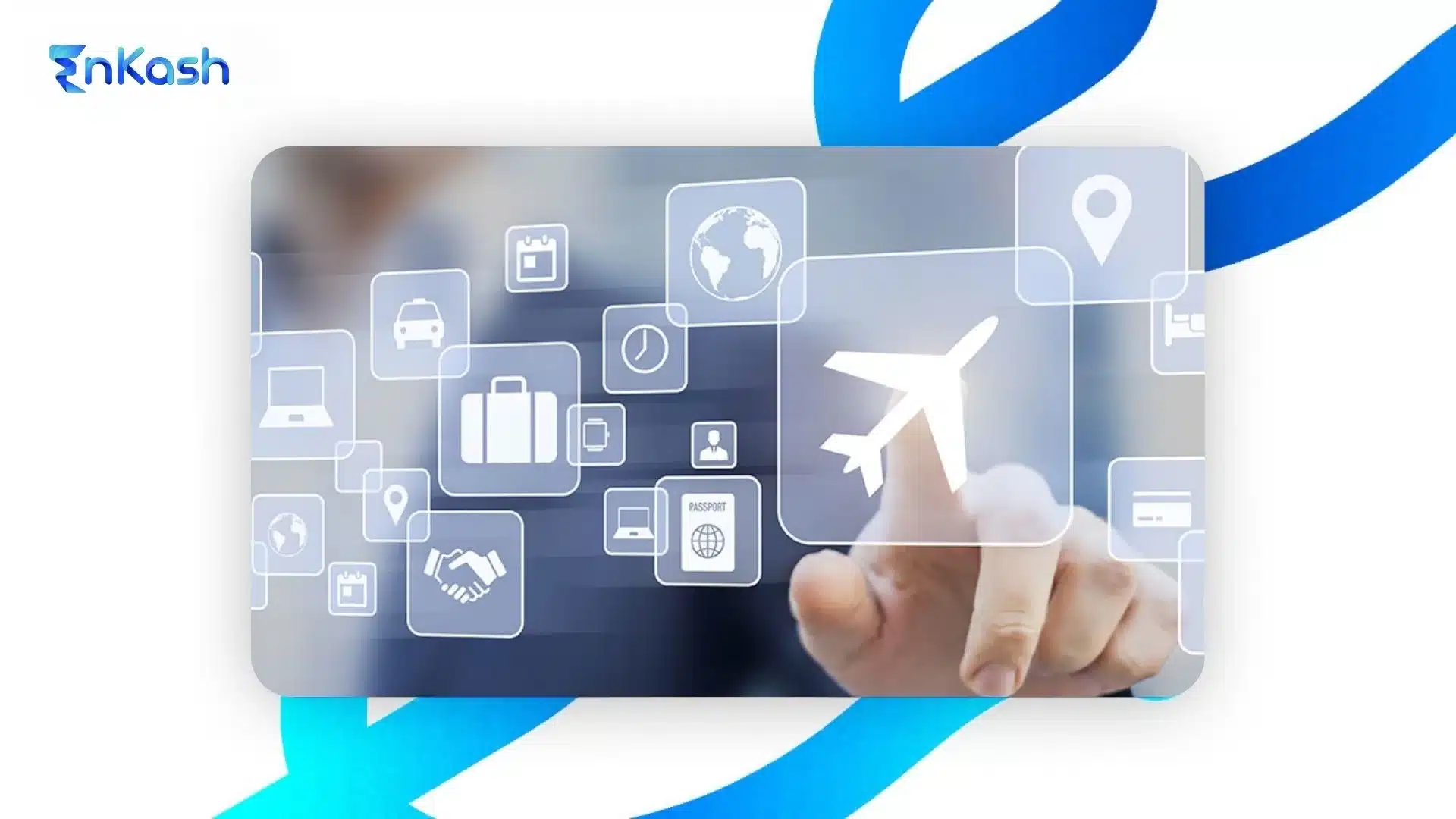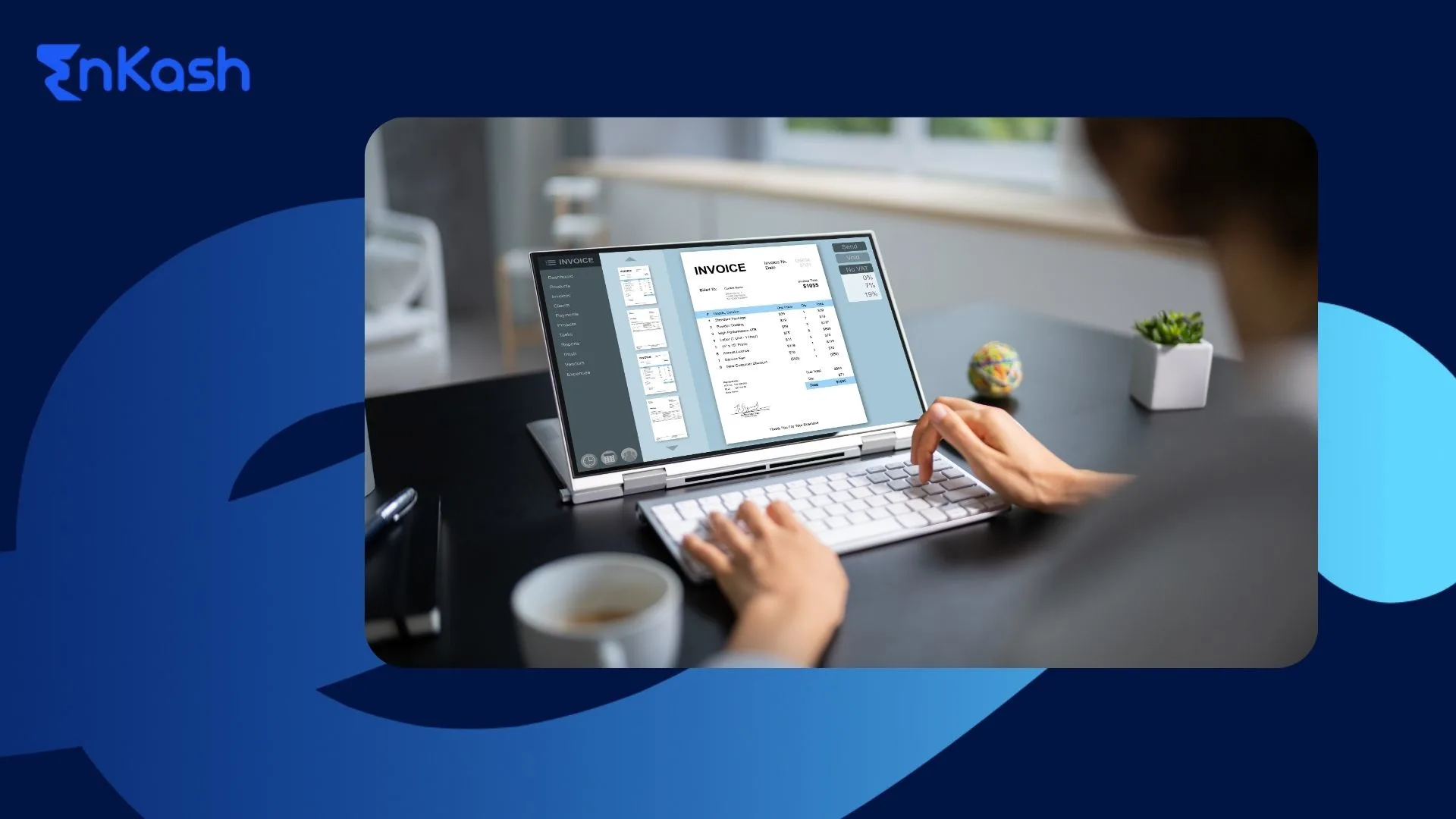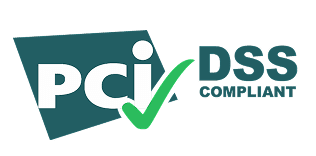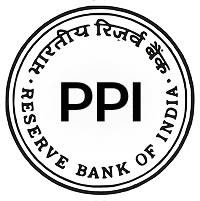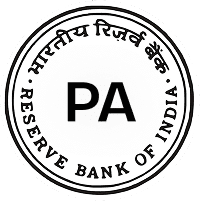Corporate travel has changed in scale and complexity over the past decade. Organizations today rely on frequent trips for business development, project delivery, training sessions, and client interactions. Managing these journeys without structure can lead to rising costs, disorganized schedules, and heavy administrative work. This is where a corporate travel management tool creates real value by streamlining every stage of the process.
A corporate travel management software brings together trip planning, bookings, approvals, and expenses in one place. Instead of employees spending hours coordinating with different vendors or collecting receipts, the system makes the process faster and more transparent. Finance teams benefit too, as they gain clear visibility into overall travel spend and can enforce policies more effectively.
A well-designed travel management system also improves the employee experience. Business trips involve long hours, changing schedules, and pressure to deliver results. When the booking process is simple, reimbursements are quick, and support is available during disruptions, employees feel more confident about their journeys. This balance of control and convenience is at the heart of modern travel management.
Another crucial aspect is the link between trip management and corporate expense management. Travel costs are among the largest controllable expenses for many organizations. Without structured oversight, expenses leak through policy violations or delayed claims. A connected platform ensures every booking is tied to a cost center, every claim is verified, and every rupee is accounted for.
By integrating these elements, businesses build efficiency, save costs, and provide a smoother travel experience for employees. The result is a shift away from reactive management of trips toward a proactive, data-driven approach. For growing organizations, adopting the right travel management software is no longer optional; it is a foundation for sustainable travel operations.
The Importance of a Structured Travel Management System
Business travel has moved from being a supportive activity to a central part of how organizations grow and maintain client relationships. When travel is frequent and involves multiple employees, managing it without structure creates confusion, unnecessary costs, and compliance risks. A well-designed travel expense management system brings order to this complexity and delivers value far beyond just booking tickets.
Here are the key reasons why organizations need structured travel management software:
- Cost efficiency through centralized control
A centralized travel management tool allows all bookings, approvals, and claims to pass through a single channel. This prevents employees from booking outside policy and gives finance teams the ability to negotiate better rates with service providers. The result is lower costs per trip and better predictability in travel budgets. - Policy compliance and transparency
Without structured workflows, policies are applied inconsistently. A digital system ensures every booking follows set rules on travel classes, hotel categories, and daily allowances. By embedding policy in the process, organizations reduce violations and create accountability across teams. - Improved employee experience
Travel can be stressful when employees must chase approvals, submit receipts manually, or wait weeks for reimbursements. An integrated corporate travel management software makes these steps seamless. Employees book within minutes, track approvals, and get faster reimbursements, which directly improves satisfaction. - Linking travel with corporate expense management
For most organizations, travel spend is a large part of controllable expenses. A connected system ensures each trip is tied to a project code or cost center. Finance teams can monitor patterns, detect irregularities, and align expenses with business goals in real time. - Data-driven insights for decision making
Beyond operational efficiency, structured travel management generates accurate data. Leaders can track spending trends, evaluate high-cost routes, and forecast future travel budgets. Such insights help in making strategic decisions that align business travel with long-term objectives.
By bringing all these elements together, a structured approach to trip management transforms travel from a chaotic process into a streamlined business function. It cuts costs, strengthens compliance, and creates a better experience for employees on the move.
Common Pain Points in Unmanaged Travel
Business travel without a structured system may appear manageable in the beginning. But as the number of trips grows, so do the challenges. Employees face unnecessary stress, finance teams lose control over spending, and managers struggle to maintain visibility. The lack of a proper travel management system creates several pain points that directly impact efficiency and costs.
Here are the common issues organizations face with unmanaged travel:
- Inefficient booking processes
Without a unified travel management tool, employees book through multiple channels. This leads to time wasted on comparing prices, missed opportunities for better deals, and bookings that are out of sync with company policies. - Delays in reimbursements
Manual claims require employees to collect receipts and submit them physically or by email. Finance teams then spend hours validating details. This causes delays in payouts, leaving employees frustrated and finance teams burdened with repetitive tasks. - Policy violations
In the absence of automated checks, employees often book higher classes of travel, unapproved hotels, or transport options beyond the allowed budget. These choices may seem minor at the individual level but add up to significant leakage in travel spend. - Lack of visibility for management
Disconnected records prevent leadership from seeing how much is being spent, where the money goes, and which teams are traveling the most. This lack of visibility makes it harder to negotiate with service providers or to forecast future costs. - Risks to traveler safety
Duty of care becomes difficult without structured trip management. In case of emergencies, managers may not know where employees are or how to reach them quickly. This gap increases the risk for both employees and the organization.
These challenges highlight why unmanaged travel cannot support a growing business. By continuing with unstructured processes, organizations lose money, waste time, and expose employees to unnecessary risks. Structured travel management software is the answer to eliminating these recurring issues.
Core Features of a Travel Management Tool
A modern travel management tool is more than a booking platform. It is a system designed to bring order, speed, and clarity to the entire process of business travel. For organizations, choosing a tool with the right features means saving costs, improving compliance, and creating a smoother experience for employees.
Here are the core features that define strong corporate travel management software:
- Self-service booking options
Employees can book flights, hotels, and local transport directly through the system. This cuts down on back-and-forth communication and gives staff access to a curated list of approved services that meet company policy. - Automated approval workflows
Instead of waiting for manual confirmations, requests move through digital approval chains. Managers receive instant notifications and can approve or reject bookings in seconds. This ensures faster decisions and consistent application of policy rules. - Integration with travel expense management software
A well-designed travel management system connects bookings with expense claims. Receipts are uploaded through mobile apps, categorized automatically, and matched against approved trips. This reduces errors and eliminates duplicate claims. - Central dashboards for finance and HR
A central view helps teams track travel spending by department, project, or individual. Finance professionals can identify patterns, control budgets, and generate accurate reports for leadership. HR teams can use the same data to review employee travel frequency and well-being. - Data-driven insights for planning
Structured travel management provides detailed analytics. Leaders can see average trip costs, preferred routes, and seasonal fluctuations. With this information, organizations can negotiate better rates or plan budgets more accurately. - Traveler alerts and duty of care
Tools send real-time updates on flight delays, cancellations, or safety risks. Managers can also track employee locations during trips to ensure they are supported in emergencies. - Mobile-first design
Travelers can book, upload receipts, and check approval status directly from their phones. Notifications keep them informed at every step, making the process quick and convenient during trips. - Secure integration with payroll and ERP systems
The system links with accounting, payroll, and enterprise software. This ensures smooth reimbursements, accurate allocation of expenses, and compliance with financial regulations.
With all these features, a corporate travel management software reduces the stress of planning, enforces compliance without effort, and helps leadership stay ahead with reliable data. A tool that integrates booking, expenses, and reporting becomes a long-term asset for any growing business.
Specialized Functionalities That Add Value
Beyond the basic features, advanced travel management software offers additional capabilities that bring real value to organizations. These functions may not be the priority during setup, but they make a big difference once travel volumes increase and processes mature.
Here are some specialized features that strengthen a travel management system:
- Real-time traveler tracking and alerts
Knowing where employees are during a business trip is vital. A strong system provides location tracking and sends alerts during delays, cancellations, or unexpected disruptions. This protects employees and helps managers act quickly during emergencies. - Mobile-first solutions for employees on the go
Business travel often involves last-minute changes. A mobile-friendly travel management tool ensures travelers can rebook flights, update hotel reservations, or submit receipts directly through their phones without waiting for office support. - Scalability for growing organizations
As travel needs expand, systems must handle larger volumes without slowing down. A scalable design ensures smooth functioning whether the organization manages a few trips per month or thousands of journeys across multiple regions. - Role-based access and secure data management
Data security is critical in corporate travel management software. Role-based access ensures that employees only see what they need, while finance and leadership teams retain control over sensitive financial records and reports. - Customizable reporting and analytics
Beyond standard dashboards, advanced systems allow custom reports. Organizations can track project-level spending, compare costs across locations, or identify trends that matter for their specific business model.
Evaluating the Best Expense Management Tool for Corporate Travel
Selecting the right travel management tool requires more than comparing prices or interfaces. Each organization has unique needs based on travel volume, policy complexity, and integration requirements. A careful evaluation ensures the system delivers long-term value and smooth adoption.
Here are the key factors to consider when assessing a corporate travel management software:
- Defining organizational needs clearly
Before reaching out to vendors, it is important to understand how many employees travel, the types of trips taken, and the level of policy control required. A tool must match these specific needs rather than offering generic solutions. - Balancing policy alignment with flexibility
Rigid rules can frustrate employees, while weak enforcement leads to overspending. The best travel management system balances both, allowing some flexibility within approved ranges while maintaining strict controls where necessary. - Integration with financial and HR systems
A strong travel expense management software should connect seamlessly with payroll, accounting, and HR platforms. This reduces manual work, ensures accurate reimbursement, and simplifies compliance with reporting standards. - Ease of use and employee adoption
The system must be simple enough for employees to use without repeated training. A user-friendly design increases adoption rates, reduces resistance, and prevents employees from booking outside the system. - Tracking success through clear KPIs
Metrics such as percentage of bookings made within the system, policy violation rates, and average reimbursement times reveal how effective the tool is. Continuous tracking ensures organizations receive measurable value from their investment.
By evaluating corporate expense management solutions on these criteria, organizations can identify the tool that aligns best with their goals. The right choice reduces costs, improves compliance, and gives employees a smoother travel experience.
Categories of Travel Management Software
Not all tools in the market serve the same purpose. Each system is designed with a different focus, and organizations need to choose the type that fits their travel and expense needs. Here are the major categories of travel management software.
End-to-End Corporate Travel Management Software
This category covers the complete travel cycle from booking to expense reporting. It includes self-service booking, policy enforcement, approvals, and reimbursement in a single platform. Such systems work best for organizations that want everything in one place without relying on separate tools.
Expense-First Platforms with Travel Extensions
Some systems begin as corporate expense management tools and later add travel booking features. These are strong in areas like reimbursement tracking, cost allocation, and financial reporting. Their travel features are useful for organizations where expense monitoring is a bigger priority than booking convenience.
Standalone Travel Management Systems
A standalone travel management tool focuses on the booking process itself. It simplifies how employees reserve flights, hotels, and local transport. These systems often need to be connected with separate expense platforms, but they provide deep control over the booking stage of travel.
Modular Travel Management Systems
Modular solutions allow organizations to pick and choose features they need. A company might start with trip booking and add expense integration later. This flexibility makes modular travel management systems attractive for businesses that expect their needs to grow over time.
Industry-Specific Travel and Expense Management Software
Certain sectors, such as consulting, project-based industries, or field operations, have unique travel patterns. Industry-focused travel expense management software is designed with features tailored to those requirements, such as multi-project cost tracking or frequent short-trip approvals.
Each category offers distinct strengths. The right choice depends on whether the organization values booking convenience, expense visibility, or a balance of both. By understanding these categories, decision-makers can match the system type with their long-term travel strategy.
Implementing a Corporate Travel Management System
Introducing a corporate travel management software into an organization is not only about installing a tool. It is about making sure the system fits into daily routines, aligns with policies, and supports employees in a practical way. A smooth rollout depends on careful planning and steady guidance.
Designing a Phased Rollout Strategy
Launching a travel management tool step by step is more effective than switching everything at once. A pilot with a small group gives managers a chance to test approvals, expenses, and reporting. Once the process runs without issues, the system can be extended across other teams.
Simplifying Corporate Travel Policies
A travel management system can only function well if policies are simple. Complex rules confuse employees and create resistance. Clear limits for flights, hotels, and meal expenses make it easier for everyone to follow guidelines and avoid mistakes.
Training Programs and Employee Onboarding
Employees need time and support to adapt to new travel management software. Training sessions, video walkthroughs, and easy-to-read guides help them learn faster. Quick assistance during the first few trips builds confidence and prevents bookings outside the system.
Mapping Data and Cost Centers Accurately
For accurate corporate expense management, data must be mapped correctly from the start. Each trip should be linked to the right project or department. This prevents errors during reimbursement and ensures finance teams can track budgets without confusion.
Monitoring Compliance and Refining Workflows
Implementation is not finished once the system is live. Regular reviews of approval times, employee adoption, and policy compliance reveal areas that need fine-tuning. Adjusting workflows based on feedback keeps the travel expense management software effective and relevant.
With a careful approach, organizations turn the introduction of a travel management system into a positive change. It creates order, reduces costs, and improves the experience of employees who travel for work.
Future of Travel Management Tools
Business travel is changing quickly, and the systems used to manage it are also evolving. The future of travel management software is shaped by new technology, growing expectations from employees, and the need for greater financial control. Here are some trends that show where these tools are heading.
AI-Powered Predictive Planning
Modern systems are starting to use artificial intelligence to recommend smarter routes and cost-saving options. A travel management tool can suggest flights, hotels, or transport choices based on previous trips, budget limits, and company policies. This helps employees save time and gives finance teams better control over spending.
Conversational and Voice-Enabled Interfaces
Travelers often need quick support when they are on the move. Future travel management systems are expected to include chat or voice-based help. Instead of navigating through multiple menus, employees can simply ask for changes, request updates, or confirm bookings through natural conversations.
Sustainability and Carbon Tracking
Organizations are paying more attention to the environmental impact of travel. Upcoming corporate travel management software will include features to measure carbon emissions and suggest eco-friendly travel options. This helps companies align travel practices with sustainability goals without adding extra steps for employees.
Unified Travel and Expense Platforms
The line between booking systems and corporate expense management is disappearing. Tools are moving toward a single platform where bookings, approvals, reimbursements, and reports are managed together. This reduces duplication and makes the entire process more transparent.
Virtual Payments and Financial Control
Virtual payment methods are becoming an important part of travel expense management software. Instead of employees using personal cards and waiting for reimbursement, companies can issue secure digital cards for each trip. This gives finance teams real-time visibility and stronger control over spending.
The future of travel management is about making processes faster, smarter, and more responsible. With these innovations, organizations will be able to manage costs better, support employees more effectively, and build stronger travel programs for the years ahead.
Conclusion – Building a Smarter Corporate Travel Strategy
Managing business travel without structure creates gaps that affect cost, compliance, and employee comfort. A strong travel management system closes those gaps by bringing booking, approvals, and expenses into a single framework.
The value of corporate travel management software is not limited to saving money. It shapes how employees experience travel, how finance teams track spending, and how leaders plan with data they can trust. By linking trip management with corporate expense management, organizations create a process where every journey is accounted for and aligned with company goals.
Looking ahead, smarter travel management tools will make planning easier, reduce risks, and support sustainability efforts. With features like virtual payments and predictive planning, these systems will give organizations better control and employees more confidence when they travel.
Businesses that embrace the right travel management software gain more than operational efficiency. They create a foundation where travel supports growth, strengthens compliance, and builds resilience for the future.
FAQs
1. What is the difference between a travel management tool and a booking website?
A booking website helps employees reserve flights or hotels, but it does not handle approvals, policies, or reimbursements. A travel management tool is a complete system that manages bookings, integrates with expense workflows, enforces company policies, and gives finance teams visibility into spending. It covers the entire cycle, not just reservations.
2. How does corporate expense management connect with travel management?
Corporate expense management ensures that every cost linked to travel is tracked and approved. When combined with travel management software, it allows receipts, claims, and reimbursements to be tied directly to trips. This connection prevents errors, avoids duplicate claims, and ensures every journey is accounted for in the organization’s financial records.
3. Can a travel management system handle multiple cost centers?
Yes, a travel management system is designed to map each trip to a department, project, or cost center. This means travel expenses can be allocated correctly without manual effort. Finance teams gain accurate insights into how much is spent by each business unit, which improves budgeting and supports better financial control.
4. Why is mobile access important in travel management software?
Employees who travel need flexibility. Mobile-friendly travel management software allows them to book, change reservations, upload receipts, and track approvals on the go. Notifications for delays or policy updates also reach them instantly. This convenience reduces stress for travelers and ensures that compliance and reporting are maintained even outside the office.
5. How do travel management systems improve duty of care?
Duty of care means ensuring employee safety during business trips. A travel management tool helps by tracking traveler locations, sending real-time alerts about delays or risks, and allowing managers to reach employees quickly. In emergencies, the system provides accurate information so companies can act fast and protect their people.
6. What role does data analytics play in corporate travel management software?
Data analytics in corporate travel management software provides insights into spending patterns, common routes, and average costs. This information allows companies to negotiate better rates, plan budgets accurately, and identify areas of overspending. Analytics also highlight compliance levels, helping leadership refine policies and make smarter travel-related business decisions.
7. How does a travel management tool reduce policy violations?
A travel management tool embeds company policies directly into the booking and approval process. Employees are shown only options that match the rules for flights, hotels, and allowances. If a booking falls outside policy, it is flagged or requires extra approval. This automated enforcement reduces violations without relying on manual checks.
8. What makes travel expense management software valuable for finance teams?
For finance teams, travel expense management software simplifies claim validation, reimbursement tracking, and reporting. Receipts are uploaded digitally, matched automatically with approved trips, and categorized correctly. This reduces manual work, prevents errors, and ensures expenses are linked to the right budget. It gives finance teams both efficiency and accuracy.
9. Can a travel management system support global and domestic trips together?
Yes, advanced travel management systems are designed to handle both domestic and international travel. They can manage different policies for local and overseas trips, process multiple currencies, and align with varied compliance rules. This makes them suitable for organizations that operate in different markets but still want unified control.
10. How does a travel management system speed up reimbursements?
In a manual setup, employees wait weeks for claims to be checked and approved. A travel management system speeds this process by linking bookings with expenses, verifying receipts through automation, and routing claims directly for approval. This reduces delays, improves employee satisfaction, and ensures payments reach staff on time.

